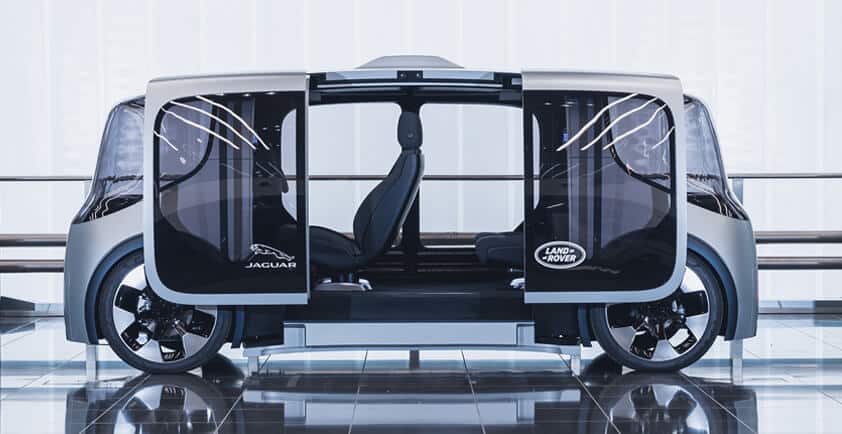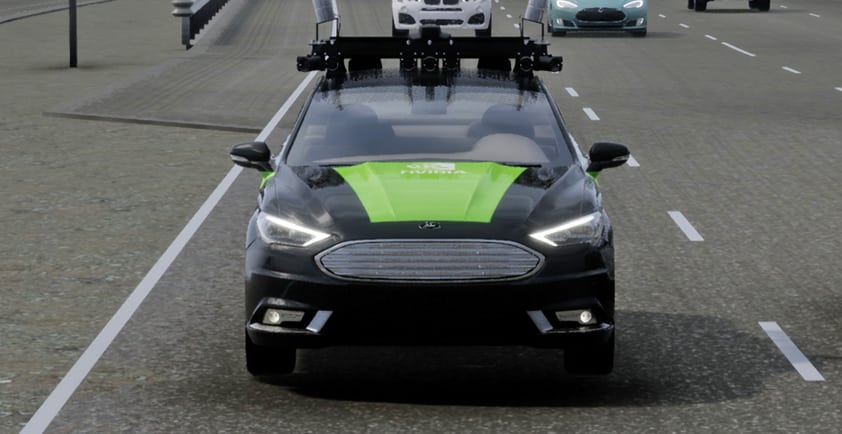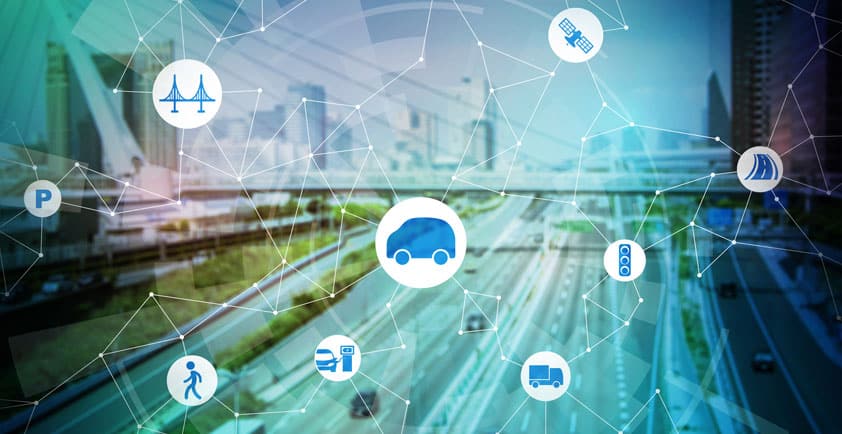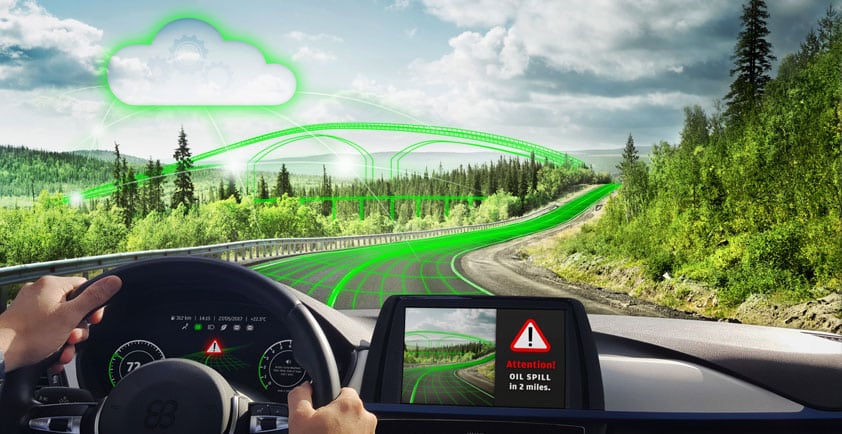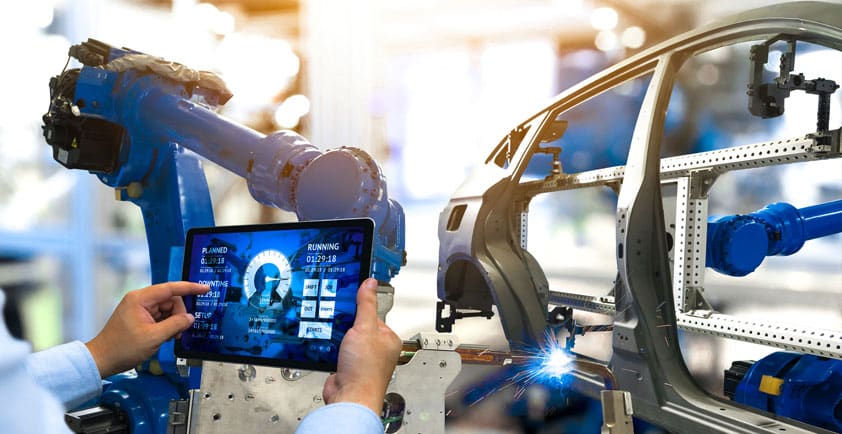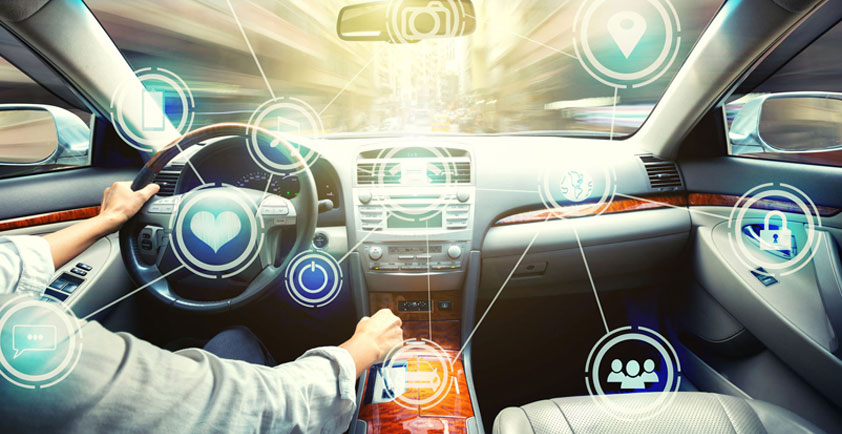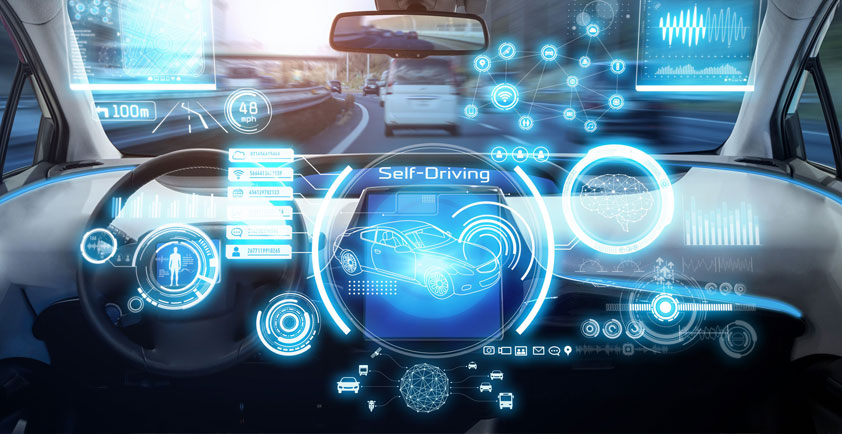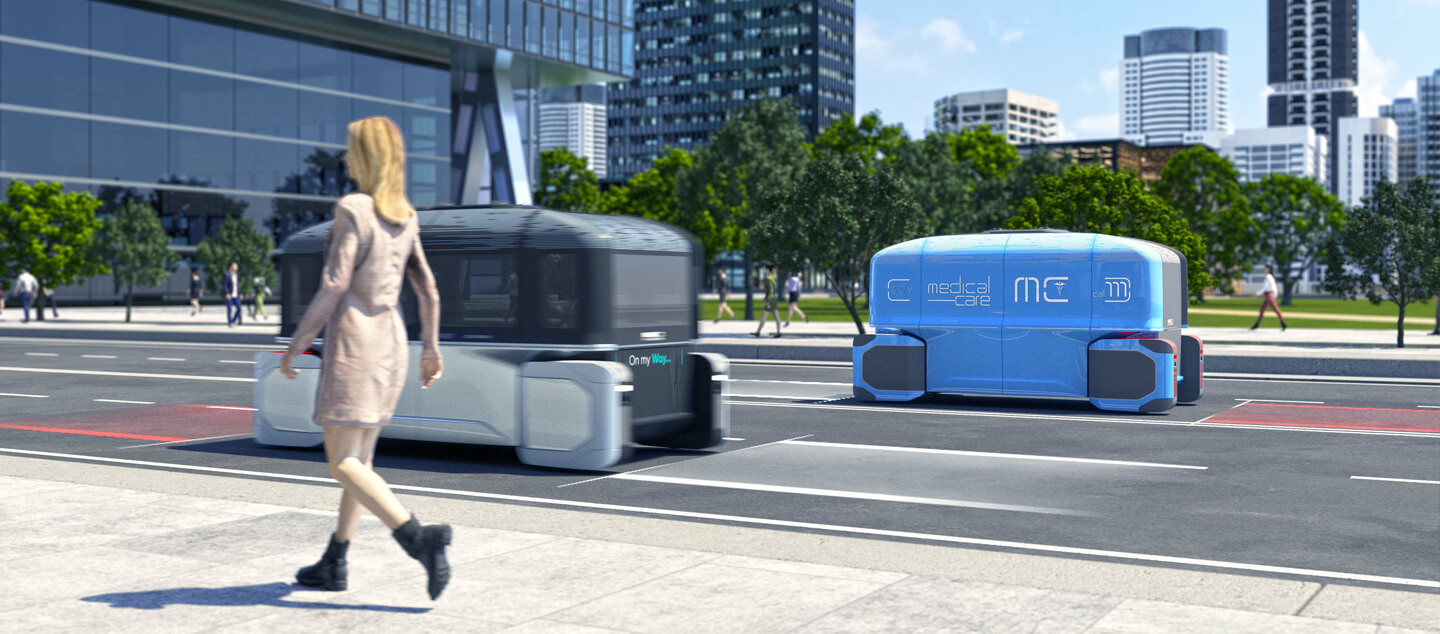
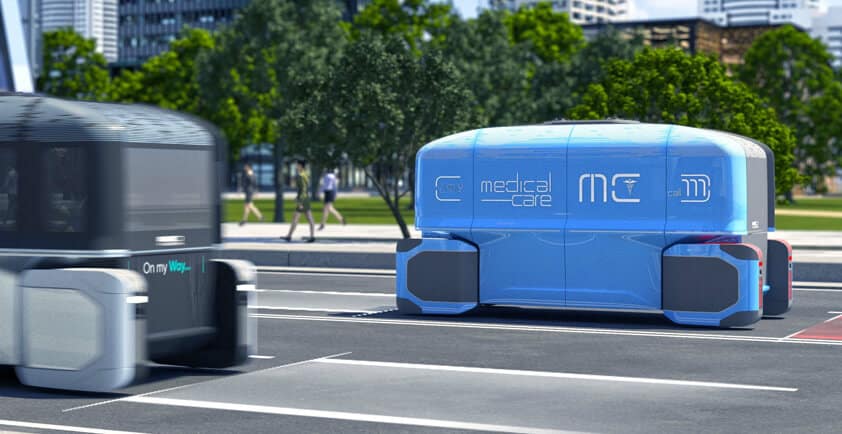
DIGITAL ECOSYSTEMS ARE DRIVING AUTONOMOUS VEHICLES FORWARD
>> Widespread adoption may still be years away, but ecosystem partners are making progress on AV/ADAS infrastructure today.
The potential value of autonomous vehicles (AVs) and advanced driver-assistance systems (ADAS) is clear. When fully implemented, AVs and ADAS could revolutionize our approach to transportation and logistics. They could move people and cargo from point to point more efficiently than ever before, while also improving safety—both for those inside vehicles and for vulnerable road users (VRUs) like cyclists and pedestrians.
Despite this promise, there are roadblocks standing in the way of widespread AV adoption. For one thing, there have been several high-profile setbacks in the market recently. For example, Argo AI, an AV startup backed by Ford and VW, announced it was shutting down in October 2022. There have also been signs that the regulatory environment for AVs is growing stricter: Cruise, a GM subsidiary that aimed to provide round-the-clock robotaxi services in San Francisco, had its AV deployment and testing permits suspended by the California Department of Motor Vehicles in October 2023.
These and other recent developments have led some to conclude that interest in AV development is waning, and perhaps even that the promise of AVs was overstated to begin with. However, this is shortsighted thinking. Despite the challenges ahead, the potential of AVs remains as strong as ever. This is largely thanks to the vibrant digital ecosystems of technology partners that are building the next generation of AV infrastructure today.
Autonomous vehicles aren’t cancelled
Some amount of market consolidation is to be expected, and it’s certainly no reason to doubt the potential of AVs. In fact, many investments haven’t been cut, just redirected. In the case of Argo AI, Ford had previously announced it would be refocusing its resources on ADAS instead of full self-driving technology. That ADAS work is now happening in-house at Latitude AI, a new wholly owned subsidiary that Ford opened earlier this year. In many ways, the new project is a continuation of the old one: More than 500 former Argo AI employees have been rehired to work at Latitude AI.
Also, while it may seem like some investors are losing the exuberance they once held for AV technology, what we’re actually seeing is market maturation. We now have a much better understanding of the scope of the challenges to be overcome, the underlying infrastructure that we’ll need to overcome them, and the diverse technology ecosystems that will help build that infrastructure. This will be a major undertaking, and we all must set our expectations accordingly.
A recent report from S&P Global Market Intelligence 451 Research says that we won’t see wide adoption of fully self-driving vehicles until about 2030. However, this doesn’t mean that there’s no progress happening in the sector today. Indeed, the International Automobile Exhibition (IAA) Mobility 2023 event in Munich was a hive of activity. In particular, IAA Mobility 2023 underscored the fact that auto OEMs are relying on their technology partners more than ever before. One could say that it’s increasingly difficult to see where the auto industry ends and the tech industry begins.
Auto manufacturers overcome challenges with help from ecosystem partners
Auto OEMs recognize that their next great challenge is to build software-defined vehicles (SDVs) that can operate independently at the digital edge. These new SDVs will incorporate ADAS as well as non-driving capabilities like predictive maintenance.
The OEMs also know that to make SDVs a reality, they’ll need to focus on more than just the car itself; they’ll also need an end-to-end architecture to support the car by delivering the right data and insights in near real time. Building this architecture will require auto OEMs to collaborate with vast ecosystems of technology partners.
These tech partnerships were on full display at IAA Mobility this year. One example is the Digital Data Garage, Equinix’s joint AV/ADAS testing solution with Amazon Web Services. One of the biggest challenges that has traditionally made AV development so expensive and time-consuming is the massive volume of data that has to be regularly collected, transferred and analyzed as part of the hardware-in-the-loop (HIL) testing process. Our demo at IAA showed how Equinix customers could use a dedicated 100 Gbps AWS Direct Connect connection to upload 400 TB of testing data to the AWS Cloud in 13 hours, compared to almost two months using a public internet connection.
As our joint solution with AWS shows, cloud services have an important role to play in enabling the future of AV/ADAS infrastructure. However, another challenge that auto OEMs face is the growing recognition that using public cloud exclusively is simply not an option. For one thing, there’s the potential for high data egress fees; given the extremely high volumes of data that auto OEMs regularly handle, putting their infrastructure completely in the cloud will never be cost-effective.
There’s also the potential for vendor lock-in, which can limit infrastructure flexibility. This can be problematic for several reasons, one of which is that OEMs might lose the granular control needed to ensure they’re complying with all applicable regulations governing how they handle data and where they store it.
Equinix is the ideal place to accelerate autonomous vehicle development
Building a hybrid infrastructure solution can help auto manufacturers take advantage of cloud services while also limiting the potential drawbacks. Equinix may be the ideal digital infrastructure partner to help them do that.
Equinix can help its customers in the automotive industry build a cloud adjacent data architecture. This gives them the flexibility to choose between secure, dedicated colocation infrastructure and highly scalable cloud services for each workload they support. Either way, OEMs will be able to maintain custody and control over their data and ensure cost-efficiency.
With Equinix, automakers can also access a global footprint of colocation data centers. By deploying the infrastructure they need in all the right locations worldwide, they can limit network latency and meet their data compliance requirements. Furthermore, the Equinix digital ecosystem—including thousands of service providers and enterprises—helps us deliver differentiated solutions for the automotive industry.
DXC Technology and Equinix partner to overcome AV data challenges
At Equinix, the partners we work with include IT service providers that deliver specialized knowledge and experience for the automotive industry. DXC Technology is one example of such a partner. DXC is the automotive industry’s systems integrator of choice. Together, we’ve built a new joint offering that helps auto OEMs transfer, store and analyze vehicle data globally, including data for AI and machine learning (ML) workloads.
Our solution brings together DXC Robotic Drive—an end-to-end solution designed to help auto OEMs overcome their biggest challenges and accelerate AV development—with Equinix data center and digital infrastructure services. The global reach and flexibility of Platform Equinix® helps more customers access the solution in more locations and environments.
Also, read our recent white paper, produced in partnership with TechTarget, for more information on the future of robotaxis. This paper explores how tomorrow’s robotaxi fleets—the early adopters of fully self-driving cars—will depend on interconnected infrastructure at the digital edge, and how dense ecosystems of partners will have to work together to build that infrastructure.
Author - Petrina Steele - Business Development Senior Director - Equinix
